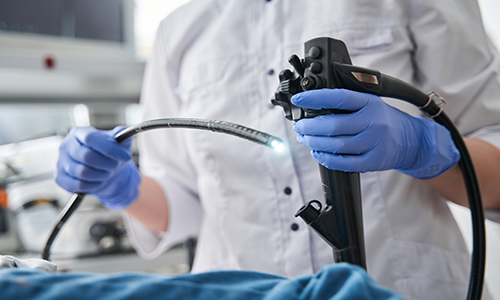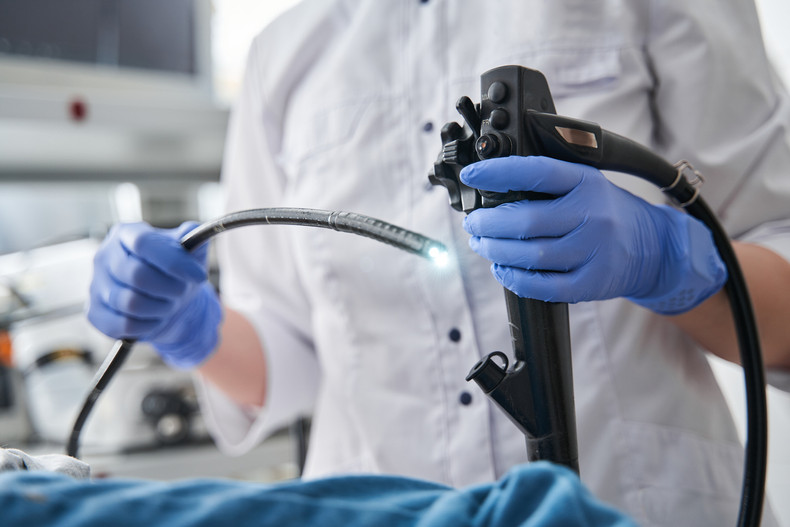
Endoscopes are used in the operating room, procedure areas, and intensive care units to view body systems and solve complex patient problems. Endoscopes are one of the most commonly seen tools in Sterile Processing (SP) and Operating Rooms (OR). Those processes seem to be ever-changing for the endoscopy and SP technicians processing them, intending to increase the level of care given to the endoscopes during the reprocessing stages. Most providers are directed to the manufacturer’s instructions for use (MIFU) for each type of scope. The endoscopy technician should have easy access to the MIFUs for the types of scopes used in their facility. Each should provide clear and detailed instructions on proper cleaning and disinfecting of the endoscope.
AAMI provides the standard ST 91 ANSI/AAMI ST 91: 2021: Flexible and semi-rigid endoscope processing in healthcare facilities to help direct users and department leaders in the development stages to comply with standards. The objective of ST91 “is to provide comprehensive guidance to achieve best practice for each stage of processing flexible endoscopes as well for competency and education of staff... The updated standard provides new guidelines for precleaning, leak-testing, cleaning, packaging (where indicated), storage, high-level disinfecting, and/or sterilizing of flexible gastrointestinal (GI) endoscopes; flexible bronchoscopes; flexible ear, nose, and throat endoscopes; flexible surgical endoscopes (e.g., flexible ureteroscopes); and semi-rigid operative endoscopes (e.g., choledochoscopes) in health care facilities.” Your department can gain access to the standard here.
AORN recently released its newly revised “Guideline for Processing Flexible Endoscopes.” The Association of periOperative Registered Nurses (AORN) provides recommendations for the cleaning, disinfection, and sterilization of endoscopes in their "Guideline for Processing Flexible Endoscopes" and "Guideline for Cleaning, Disinfection, and Sterilization of Flexible Endoscopes.”
SP and the OR departments may already have the AORN guidelines. Still, they may not currently have access to the new recommendations that provide guidance for hand-over communication to decontamination personnel, borescope inspection, cleaning verification tests, and drying processed endoscopes. If not, both departments can access them via the following sites: "Guideline for Processing Flexible Endoscopes" and "Guideline for Cleaning, Disinfection, and Sterilization of Flexible Endoscopes."
AORN HandOver Process
AORN has redefined the handover processes regarding how the Operating Room/Endoscopy nurse communicates to the SP/processing area decontamination technician. Communication should be direct from one healthcare professional to another to make all aware of the time the point-of-use treatment was completed and if it needs additional cleaning. Overall, clear and concise communication is vital to ensure that the endoscopes are appropriately cleaned, disinfected, and sterilized before they are used again. This can help to minimize the risk of infection and ensure patient safety.
Additional resources from AAMI ST91 recommendations have provided a guideline specifying a time limit for use to decontamination. It also lists specific tasks to perform when transporting to the decontamination area of the endoscope. If the scope is not transported and point-of-use treatment is not performed, the scope may be damaged or become unusable. In addition, scopes must be cleaned and disinfected properly to reduce the risk of contamination or injury to the patient.
Recommendations for the safe use and processing of endoscopes include:
- Use clear communication. Communicating point-of-use treatment to endoscopy technicians is essential in ensuring that the instruments are properly cleaned and sterilized before they are used on patients.
- Provide clear instructions: The endoscopy technician should be given clear and detailed instructions on how to properly clean and disinfect the endoscope.
- Emphasize the importance of safety: The endoscopy technician should be reminded of the importance of maintaining a safe and sterile environment for patients and proper cleaning and disinfection to prevent infections.
- Address any concerns: The endoscopy technician should be encouraged to ask questions or raise concerns about the cleaning and disinfection process, and any issues should be addressed promptly.
- Provide ongoing training: The endoscopy technician should be provided with ongoing training and education on the latest techniques, protocols, and regulations for cleaning and disinfecting endoscopes.
- Monitor the process: The endoscopy technician should be monitored regularly to ensure that the cleaning and disinfection process is performed correctly and to make any necessary adjustments.
- Keep records: It is essential to keep records of the cleaning and disinfection process, including the date, time, and personnel involved, to ensure that the instruments are properly maintained and to facilitate quality control.
Borescope Inspection Recommendations
Borescopes allow for visual inspection of internal channels and may identify damage or debris that would otherwise be undetected by a visual inspection. AORN recommends using a clean borescope to visually inspect accessible channels of flexible endoscopes before sterilization or HLD.
It's important to note that the endoscopic borescope inspection should always be performed by trained and licensed healthcare professionals. The inspector should ensure that they are following the appropriate guidelines and sterilization protocols to minimize the risk of infection and ensure patient safety.
Cleaning Verification Tests
AORN recommends using cleaning verification tests to verify the manual cleaning of flexible endoscopes before sterilization or HLD. Cleaning verification testing for microscopic substances such as ATP, protein, carbohydrate, or hemoglobin, is recommended to provide an objective method for verifying cleanliness.
Verification is an essential step in the sterilization process. Cleaning verification for surgical instruments confirms that a surgical instrument has been properly cleaned and is free from contaminants. Skipping verification, even when the sterile processing technician feels confident that they have sterilized an instrument properly, puts the patient at risk of infection.
Drying Processed Endoscopes
It's important to perform the drying process carefully and thoroughly to ensure no moisture is left inside the endoscope. Moisture leads to bacterial growth and increases the risk of infection.
The AORN recommends drying all accessible channels of HLD-processed flexible endoscopes per the manufacturer’s IFU with pressure-regulated instrument air or HEPA-filtered air for a minimum of 10 minutes or until no visible moisture remains.
In Conclusion
AAMI and AORN provide clear guidance to ensure sterility and safety. Although the recommendations are ever-changing, these organizations help us keep our staff and patients safe. They have provided updates for proper cleaning, disinfection, and maintaining flexible endoscopes. These organizations continually perform research and update their recommendations to ensure that healthcare facilities can provide the highest level of patient safety. Preventing the spread of infection and ensuring the proper functioning of these medical devices is one of the most effective ways to keep patients safe. Healthcare professionals need to stay informed and follow these updates to ensure compliance with infection control standards and best practices. Happy processing!
References:
Guideline for Processing Flexible Endoscopes: https://www.aorn.org/guidelines/guideline-for-processing-flexible-endoscopes
Guideline for Cleaning, Disinfection, and Sterilization of Flexible Endoscopes https://www.aorn.org/guidelines/guideline-for-clea...
ANSI/AAMI ST 91: 2021: Flexible and semi-rigid endoscope processing in health care facilities https://www.aami.org/st91

